Advertisement
'Mascots!' Exhibit Asks Why We Care So Much About These Fuzzy, Costumed Sports Characters
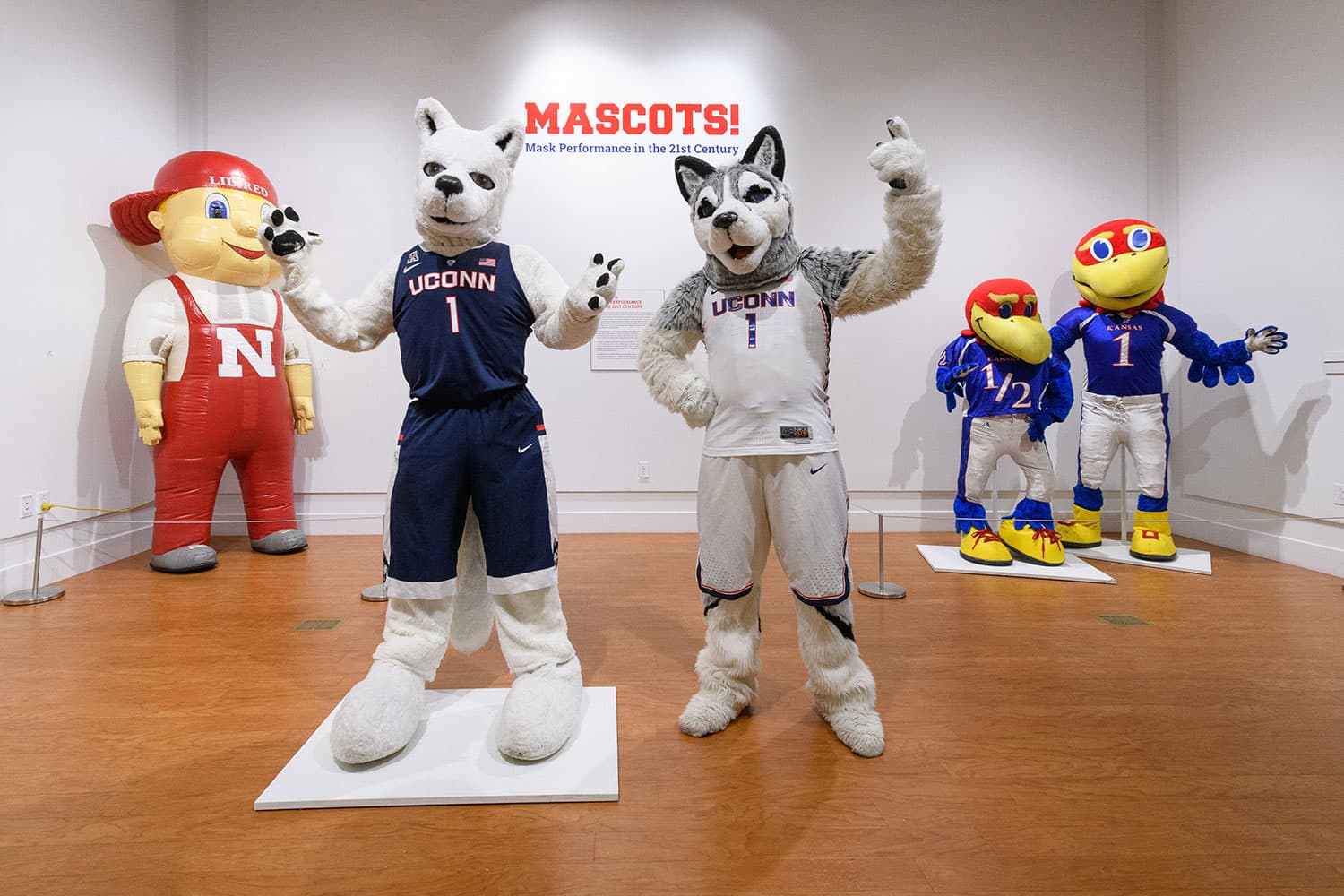
“Ubiquitous and invisible” is how John Bell sometimes describes puppets and masks in our society.
Somehow masks and puppets are everywhere — and yet we can’t quite see them. They march in parades and protests. They stand on street corners selling us fast food and tax services. They hug us in their furry arms at amusement parks. They’re the famous creatures and robots in beloved movie epics. They’re the shark in the Super Bowl halftime show. And still we don’t see ourselves as a society full of masquerades.
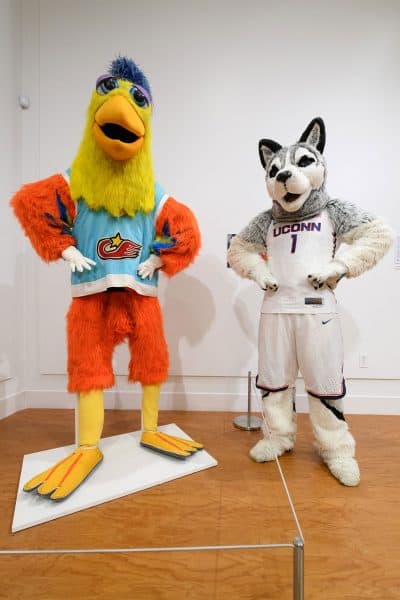
“I think sometimes puppets and masks are thought of as a primitive and non-modern remnant of indigenous cultures. … And yet they show up,” says Bell, a Cambridge-based puppeteer and theater historian, as well as the director of the Ballard Institute and Museum of Puppetry at the University of Connecticut, one of the founders of the theater company Great Small Works, a longtime performer with Vermont’s Bread and Puppet Theater and one of the founders of the annual Honk! festival in Somerville and Cambridge.
This ubiquitousness and invisibility of masks and puppets has fascinated and frustrated Bell. In an effort to figure it out, he has made it a practice to note examples of what he calls “object performance.” The latest result of his observing is “Mascots! Mask Performance in the 21st Century,” an exhibit at the Ballard Institute and Museum through Feb. 11.
The museum’s Emily Wicks and Matt Sorensen have brought together 13 college and pro sports mascots as well as commercial mascots from across the United States and Canada. Among them are the San Diego Chicken and two costumes on loan from National Baseball Hall of Fame — including the Boston Red Sox’ Wally the Green Monster.
“Puppets and masks seem like they’re left over from ancient culture and yet they’re in sports stadiums and amusement parks,” Bell says. “The power of these masks is very intense. People have very intense feelings about these mascots and how you display them and how you treat them.”
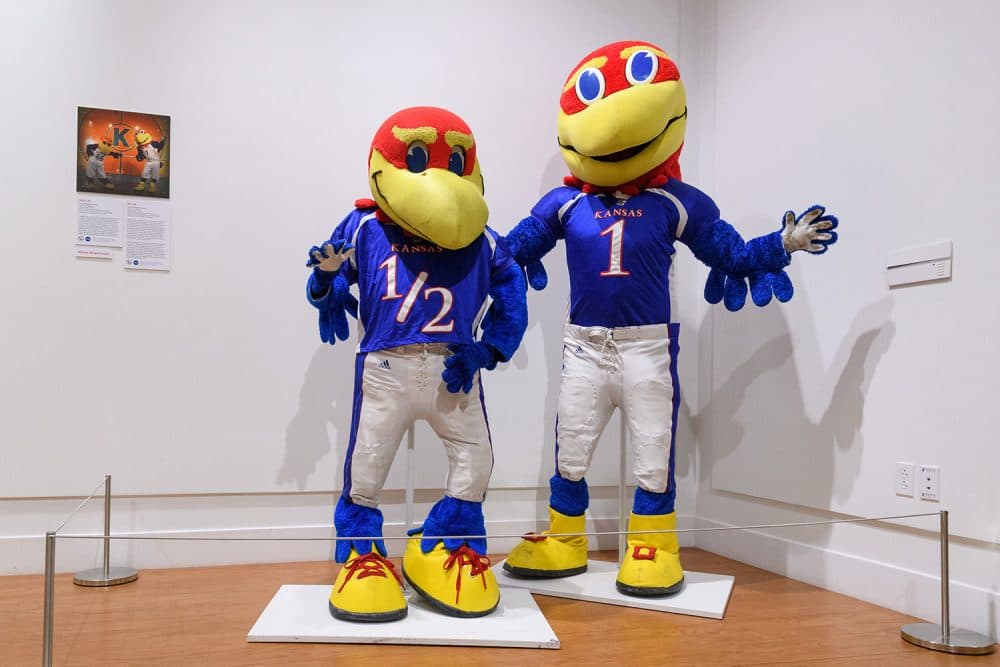
“Mascots” traces the tradition of these over-life-sized masked and costumed characters to the 1800s.
“The term ‘mascot’ derives from a 19th century French word for a good-luck charm bringing power to a group or community. This could be a living animal or human, or a material object representing either type of being,” an exhibition sign explains. “Over-life-size masks and costumes have been a feature of American popular culture and ritual performances at Halloween, Mardi Gras, Easter and other events since the 17th century. However, the very first American mascots were actual animals or humans (sometimes children) who appeared in military, academic and athletic settings together with the team or group they had been chosen to represent.”
Yale University’s bulldog "Handsome Dan" — an actual, living pooch — is considered to have been the first live university mascot, the museum reports. “Actual animal mascots were augmented by mask-wearing humans only in the mid-1960s, when Brutus Buckeye — the personified fruit of the buckeye tree rather than an animal —represented the Ohio State University football team in a giant spherical papier-mâché mask,” a sign explains. “Other colleges and universities soon followed suit, and mascot performance became a staple of college life.”
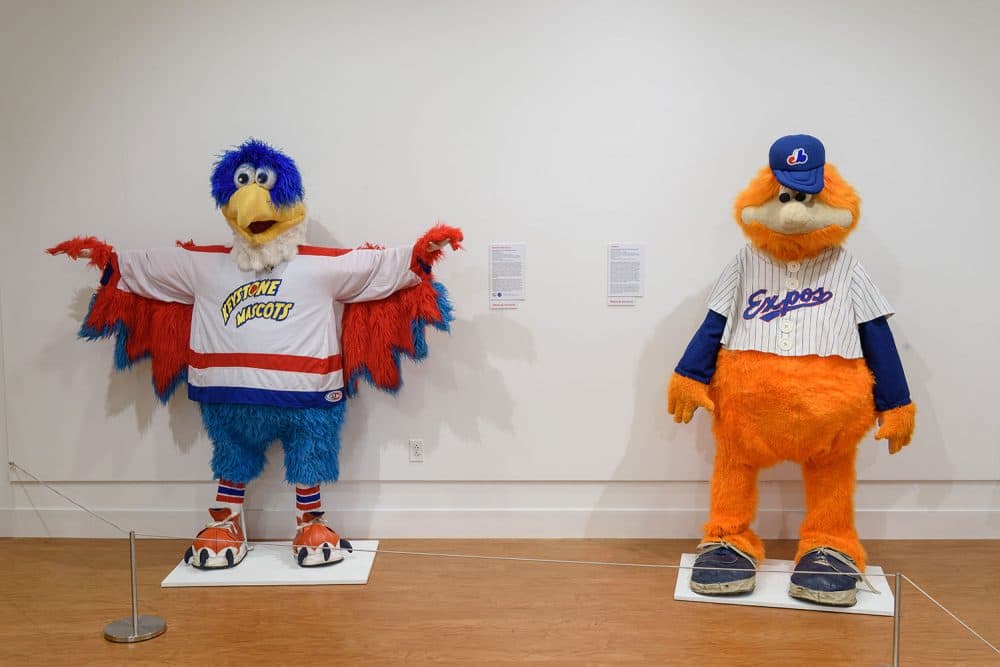
“Like all forms of puppet and mask theater, sports mascots connect with us in a kind of visceral and deep way. It’s not something you theorize a lot about. It’s something you connect to automatically,” Bell says.
What does it say about us that mascots are so ingrained in our culture? “I think it means we’ve never been fully modern in the sense of abandoning ancient rituals and beliefs,” Bell says. In the West, since the 18th century Age of Enlightenment, we’ve often told ourselves that science has supplanted superstition. Part of this historical transition was the suppression of carnival and other European festivals and masquerades. But they never quite disappeared. “These ancient performance forms with masks and puppets — what Freud called the uncanny — they still maintain a certain hold. Sometimes we try to limit that by saying it’s for kids.
“For me, it’s reassuring that we allow ourselves to become excited and engaged with these masked characters we create. Not simply to tell a story, but to represent who we are collectively. And that’s connecting with traditions and means of performance that go back hundreds of years,” Bell says. “Even though we don’t talk about it expressly.”
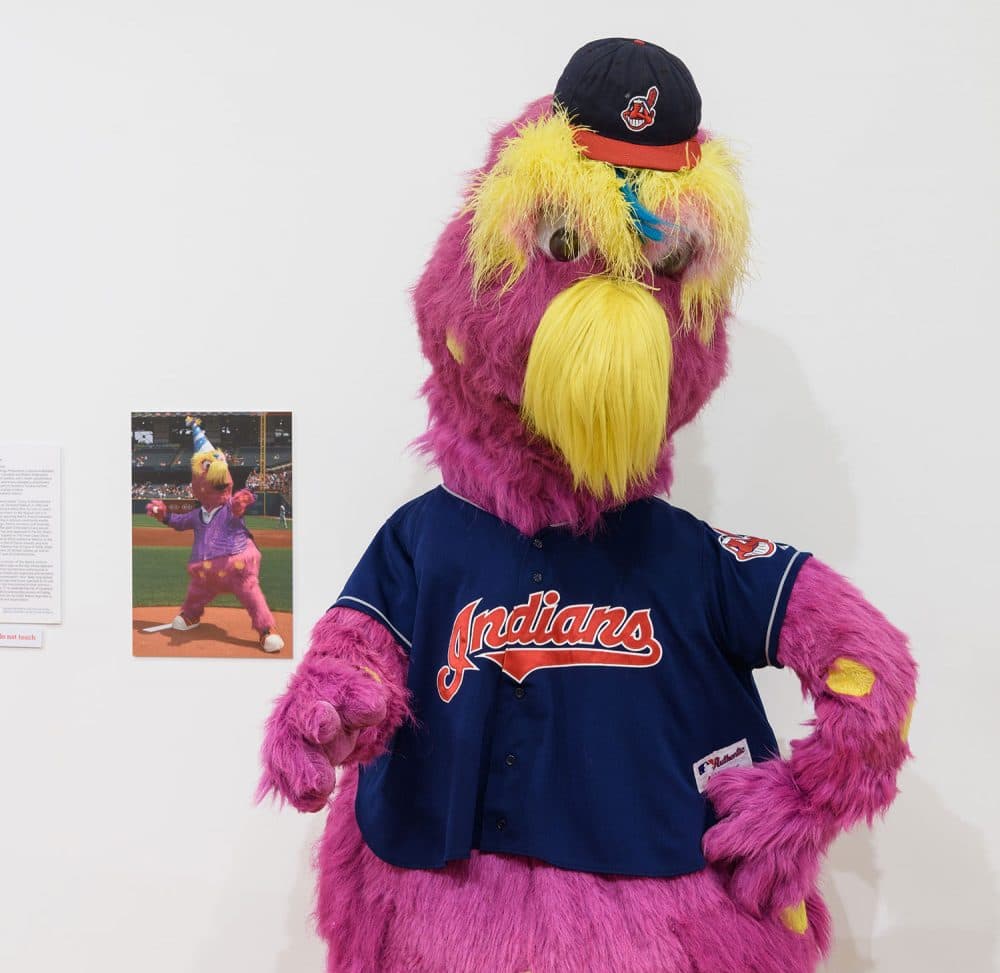
“Mascots! Mask Performance in the 21st Century” is at UConn's Ballard Institute and Museum through Feb. 11.
